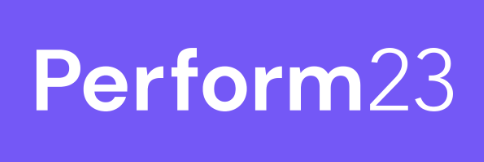How Automated Reporting Unleashed Our Value-add Analysis
- 0.5
- 1
- 1.25
- 1.5
- 1.75
- 2
Speaker 1: Hi, everyone. So today we're going to be getting into a little bit about how StackAdapt has used Planful in order to help us automate a lot of our reporting, free up some capacity for our analysts to really do some value add analysis. So just a quick overview of what we'll be getting into, just getting to know me a little bit, a little about StackAdapt. We'll talk about the size and scope of our team just to set the context of why we're using it and why we're using it the way we are. We'll talk a bit about our old process, what really led us to using Planful, and then we'll get into the exact details of how we used integrations and inaudible reporting and report collections in order to facilitate automation. So let's get into it. A little bit about me. I'm based in Toronto, Canada. So I've started my career in the accounting field actually before moving into FP& A. When I finally moved into FP& A, that's kind of where I found home, I was stuck there afterwards. So since then I've worked in several different fields in technology, financial institutions, and even cannabis when that was like the craze in Canada in 2018. Finally landed at StackAdapt now where we just implemented Planful. Outside of work, keeping up with the theme of team sports. I'm a huge basketball guy. I don't know if you guys know this, but the NBA Draft Combine is happening next door, so that's pretty cool. And then outside of that, there is Sully, my two year old Sheepadoodle. He's kind of a handful, so he takes up all my time, thought I'd plug him in there. So about StackAdapt, we are a self- serve programmatic advertising platform. So what we really do in the programmatic advertising space is help the process of media buying. So we help connect advertisers who want to display their ad to the supply. So we are a demand side platform. We use a lot of AI and machine learning in order to help agencies and brands automatically place their ads optimally at good price. So just a little bit, a quick introduction about our FP&A team specifically. We recently started our FP& A team. So in 2021, there was really only just two people, myself and our director of FP& A. We've since expanded a little bit, but just to set the scope, we were a brand new function. No real established processes or anything like that, so to speak of. So getting ourselves up and running with the right tools was paramount for us. So a little bit about why we started using Planful and how it's really helped us, and mostly it has to do around how manual things were for us. So if you think about a traditional month end, quarter end process, you're really looking at a regular set of cadence, a regular set of reports that don't really change too much, but if your data's not in the right place, you find yourself just extracting information. For us, we were talking about extracting things from our ERP, extracting information, budget information stored in Decks, stored in Google Sheets, stored in Excel, just everything that we have to bring together. You have to update all your rows, you have to update all your columns, do all your checks and balances as well. So every month it turns into this process where like, Hey, is this number right? What's going on? What do we have to do to change it? So that was really inaudible consuming. As you can imagine with a small team, it was really taking up all our time. Traditionally, you would expect an FP& A team to be much more involved with the business, and we weren't able to get to that point because our time was so bogged down into just manual processes. So how did we do this? Like I mentioned earlier, we really leveraged a lot of the integrations, the powerful integrations that Planful provides to you. With our ERP, we've looked into dynamic planning and specifically report collections to tackle this problem. Just to get into that in a little bit more detail, for context, we use Sage Intacct for our ERP. So right now we have it set up so that both our GL balances and our transactional level data get pushed in inaudible so that's been really helpful in terms of just making sure we always have 100% accurate actual information when it comes time to do our analysis, our forecasting and our reporting. BambooHR is something we're working on bringing in right now. That's our HRIS tool, just so that we can unlock some more around workforce reporting as well. Yeah, so getting into how that actually all comes together. So like I mentioned, one of the reports that we spend a lot of time building, a lot of time looking into every month is a standard variance report. Nothing fancy, quarter to date, peer to date. You're just looking at actuals, budget information, what you did the prior period. But as you can imagine, there's a lot of manipulation that happens as a result. So two things that really helped us streamline this process is one, report sets. So report sets, has anyone used those before here? Nice, nice. So report sets have really, really helped us because it allowed you to create a custom set of reports that you can continuously roll forward. It's really flexible. So a lot of the times our reports don't perfectly match our chart of accounts. So a lot of times, say for instance, you want to do calculations, so like gross margin calculations, net income, EBITDA, stuff like that, that's not naturally part of your chart of accounts. You have to do an calculation for it. So instead of that, you can just have a predefined list of every account you want to report on, and you can replicate that between every report you need though anytime I'm building a new report, I start from a report set, see if I need to adjust that to bring in any new or remove some items. You can also use it to create a column set. So you see there, I do budget information, actual variance and percentage variance, really basic stuff. But what we can do with the report set is just eliminate the need to always do the calculation of, Hey, your variance is actual minus budget, your percentage of variances that divided by your actuals. It's just time consuming, it doesn't add any value to us but it's also one of those things you have to check every time just because you don't know if someone fat- fingered something, right? So that culmination really creates the frame of your report. You can just start slotting whatever account level information you need into the middle of that. Now the next thing that really started saving us time is the use of substitution variables. I'm sure everyone here has kind of looked into it a little bit, but the two substitution variables we use the most is around scenario and time. So time being the most important one for us. So if you think about, say a monthly department variance report, what do you need to do? Every month, you're going to be setting your month, what period are you looking at? What's the comparison periods? And then you have to update information. So what we've done instead is for our columns, we set it as current month. That's the name of our substitution variable, and then the comparison period. So if we're doing 12 months prior or we're doing the prior quarter or something like that, we just do current month minus 12. So what you have there now is when you create a report and you're refreshing it, all you have to do is change your current month substitution variable to say Jan 1 2023, and all those other variables dependent on your substitution variables, update that as well. And then we can also do that for scenarios. So say you have budget, you're three months down the road, you refresh that budget into a new 3 + 9 forecast. You can just change that. You don't have to manually recreate the reports, swap out your budget column, put in your new forecast column, it's right there for you. You just said it, forget it, you're done. All right. Now the next part that was a relatively new feature that we've kind of discovered and started playing around with is report collections. So report collections are used after you've created your report. So after you have your report, you have the option of how you want to distribute it. So what we use report collections for is keeping along with this variance report. Example here is we want a department report. So every single department leader understands what's happening with their budget, actuals versus budget so that they can just have some insights into their business. But as you can imagine, if we were to do this manually, we wouldn't be able to. With two to three people on our team, we can't have people just manually going there to update numbers every month, every period. So instead, when you go to a report collection, all you have to do is select the report that you created. For ours, it was our department report. You select bursting, and what you're able to do then is select what dimension you want to use to burst it against. So for ours there we've selected department. So you'll see there those are every department that we have in our entity and what happens is that the report will run multiple times over and over, just change that one department dimension. So what that means for us is now with a click of a button, we have a report that looks like what we have down there on the bottom. So one consolidated report, each individual tab there has our department. So executives, leaders who want inaudible things at the consolidated level can still look at the consolidated level, but they have additional tasks like, Hey, I want to drill down on this department. Something looks weird. We've got that ability to do that. For our individual budget owners, there's also that button up there in the corner, it's a little blurry, but it says you can also produce all of these reports as individual files as well. So you have all these individual files available, you can just quickly, easily send them to all your department budget owners. So with that, as a result, StackAdapt has been able to greatly reduce the amount of time we spend creating these reports, doing all these, I'd say, manual tasks, not really value add. Instead, what we're doing now is creating these reports, looking at them and saying like, Hey, what's going on? Talking to our department owners and asking them for insights on their business. Are these variances related to actual business changes? Is it a one time change? That type of information we are never able to get to because we spend so much time actually just updating reports. So that's how StackAdapt has kind of leveraged Planful for our automations. I just kind of opened it up to questions now. In the front?
Audience: inaudible.
Speaker 1: Yeah, so the question was, any recommendations for people who are just starting to implement Planful? So it certainly sounds like there's a lot of people here are just implementing too, and yeah, for sure, I think the most important thing for someone thinking about a fresh integration is really define your output first. You can spend a lot of time playing around with substitution variables, collections, but if you don't know what your final output is, like your implementation partner or consultant can't really help you build it. So yeah, definitely have a good idea what you want built before you start tackling all the different potential solutions. Yeah.
Audience: inaudible.
Speaker 1: Yeah, yeah, for sure. So there's a couple of different options you have within Planful. So one of them is a scheduler where you can actually input their email and just send it to them directly. We haven't done that option, it's just because we are relatively new with it. So right now it gets exported into multiple individual files that we can just take a look at, do our FP checks on it first and then send them out. But the way you define your report, how many departments you select really determines what the report looks like. So if you can just set, you know which departments a leadership look at, you just set those departments and you run that report, you can do multiple iterations of that, and it's still all just a click of a button. Yeah.
Audience: Utilizing inaudible.
Speaker 1: Yeah, thanks. Question was if we're using the Planful dashboard tool right now, or any kind of other visualization. We're not, right now. So we're taking a very crawl, walk, run approach right now with Planful. The first phase for us is really getting to that reporting side of things, just creating reports that quite honestly haven't existed in the past inaudible. The next step for that is exactly what you said, creating these actual dashboards. We do have different reports right now, not exactly the department variance report, but for our forecast and budget updates, we actually use the Excel report feature for that. So because it's in Excel, you can just link it to your regular graph data, and we have it for that aspect of our reporting right now. Yep.
Audience: inaudible.
Speaker 1: Yeah, it's a good question. So the question was if we're using the spotlight connection to generate board reporting, so we are, to an extent right now, we use it more for the, call it the inaudible side of things, so our MDNA reporting and any investor reporting that we have. So pretty straightforward. You have your standard template. So say you have a standard MDNA document, you have these numbers, it's very formulaic the way these documents are completed, like current quarters revenues are up, whatever percentage from this number, you just set a sub, again, you use variables here to point that as current month revenue versus current month minus however many period revenue, and then those calculations can still flow. So your entire document, again, gets updated just by using substitution variables. Not a problem. Yes. Christine?
Christine: Are you scheduling your inaudible?
Speaker 1: Yeah, so the question from Christine, our implementation partner is if we're scheduling the reports or not. So right now we're not scheduling the reports just because we have, we're a private company, so we have very unpredictable close times right now for our business. The idea is to get that in a more regular cadence so that one more step of pressing that report, again, it's like iterative, but that is the next step for us. Yeah.
Audience: inaudible.
Speaker 1: That calculation can be done through a formula. So as long as you have that properly defined, then yes. All right. Sounds like that's it.
Audience: inaudible more questions? Speak now or forever hold your peace. inaudible last session inaudible.
Speaker 1: Yeah, yeah.
Audience: inaudible.
Speaker 1: What is he doing at a G League event?
Audience: inaudible.
Speaker 1: Yeah, yeah.
Audience: inaudible.
Speaker 1: Yeah, yeah. I might have to camp out in front of the arena just to get some autographs.
Audience: Yeah, inaudible. Yeah.
Speaker 1: Yeah. Good call, good call.
Audience: All right. Well, thank you so much. Thank you inaudible.
DESCRIPTION
Finding the time for deep, meaningful financial analysis is tough when you’re juggling too many data sources. Join Barry Cheung, Financial Planning and Analysis Manager at StackAdapt, to learn how the company decreased manual effort to maximize FP&A’s focus on analyzing business results, optimizing forecasts, and collaborating with their business partners. If you’re looking to move from manual reporter to value-added collaborator, this session is for you!








